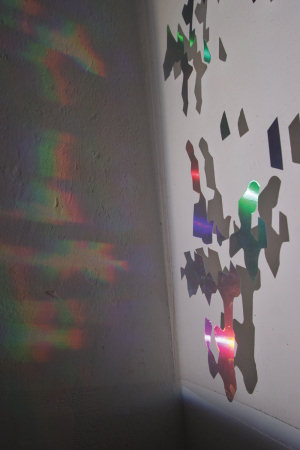
“Crystalline diagram”, 2006 by Uršula Berlot.
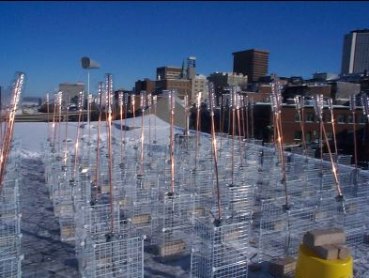
The “Wind Array Cascade Machine – WACM” (2003), by Steve Heimbecker, is a 64 channel kinetic wind mapping and network diffusion system. The data generated, can be recorded and archived. The WACM series of installations are: “POD” (2003), “Signe” (2005), “Paravent” (2006), and the “Turbulence Sound Matrix” (2007).
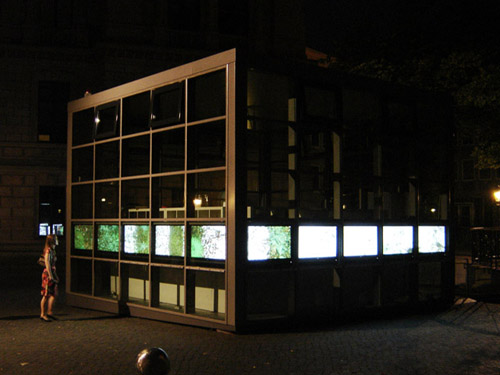
“Wissengewächs”, 2007 by Laurent Mignonneau and Christa Sommerer. Sensors measure the passerby’s presence and movements. A growth software relates these movements to the growth of artificial plants on the screens.
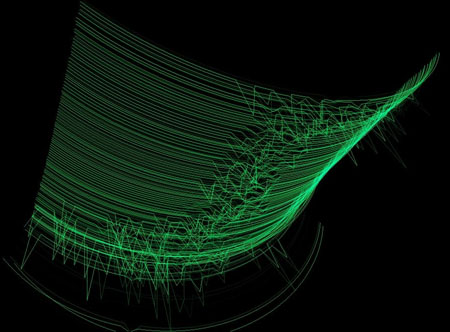
“SKIF++” is a collaboration of Jeff Carey, Robert van Heumen and Bas van Koolwijk.
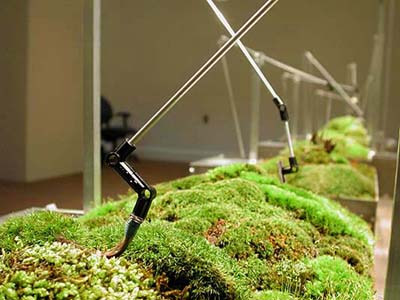
“Laboratory for Ephemeral Investigations”, 2002 by Jennifer Hall and Blyth Hazen.

“OGLE: The OpenGLExtractor” by Eyebeam R&D. Example: 3D-printing Google Earth Buildings. “OGLE” is an open source software package by the Eyebeam OpenLab that allows for the capture and re-use of 3D geometry data from 3D graphics applications.
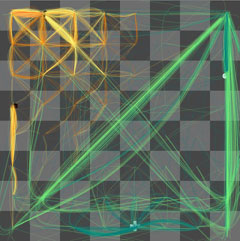
»Thinking Machine 4«, 2004 explores the invisible, elusive nature of thought. It is an artificial intelligence program, ready to play chess with the viewer. If the viewer confronts the program, the computer’s thought process is sketched on screen as it plays. A map is created from the traces of literally thousands of possible futures as the program tries to decide its best move. Those traces become a key to the invisible lines of force in the game as well as a window into the spirit of a thinking machine. By Martin Wattenberg and Marek Walczak.
Interactive, multiple installations made up of various locations, distant from each other, coordinated across the mobile phone network.
»Programmed machines, partial vision« (computers,cables, silicone). By Maurizio Bolognini .
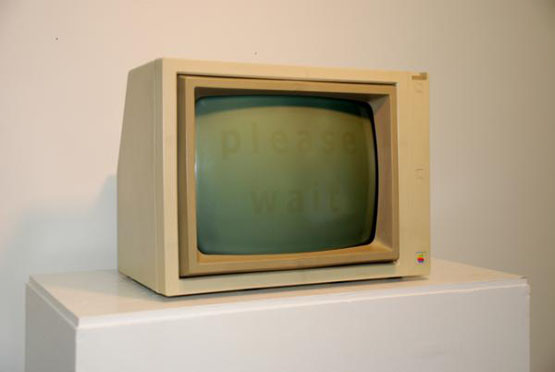
»Screen Burn (please wait)«, 2005. Steven Read wrote a software program in Apple II Integer Basic that displays an image on the monitor’s screen. Then he ran the program continuously for about 6 months. The software image was eventually burned into the screen because the internal phosphor compounds which emit light lost their luminosity and left behind a ghostly trace. The ‘please wait’ text is actually an image which took over 1000 lines of software code to create. The old Apple II operating systems (DOS 3.x, ProDOS, etc.) did not come with any font facilities, if you wanted a font you had to code it from scratch.